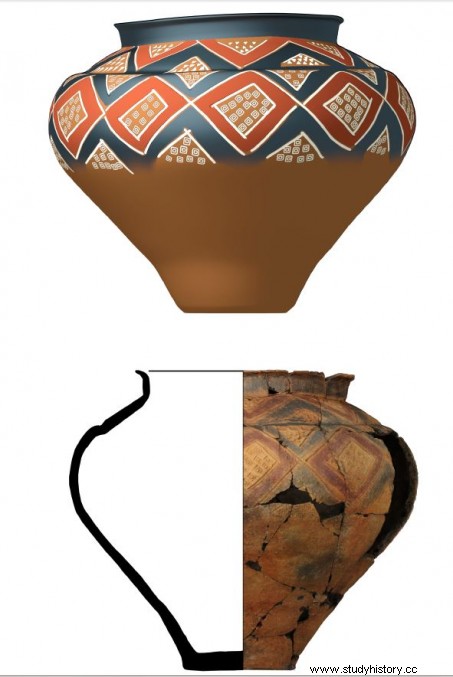A deadly virus has been detected in Germany, on shards of pottery dating from the Iron Age unearthed at the archaeological site of Heuneburg. Proof that hemorrhagic fever raged in Europe from -2500 years ago.

Reconstruction of the Iron Age fortified site of Heuneburg, Germany.
The famous French Nobel laureate in physics Georges Charpak once wondered if in ancient times the furrows traced by potters with their wheel could not, like a disc, record their voice! Far from the poetic dream of the great scientist, it is the signature of a merciless virus which has just been identified on shards of terracotta found in Germany, in Baden-Württemberg, in Heuneburg. There, in a fortified site from the Iron Age (600-450 BC), not far from Ulm, researchers from Purdue University (Indiana, United States) managed to isolate and recover a deposit residual human organic matter:Crimean-Congo virus (HCFCV) protein fragments! Crimean-Congo fever (CCF) is a fatal hemorrhagic fever caused by a nairovirus virus of the family bunyaviridae transmitted by ticks. These remains had been preserved in a terracotta that had contained the blood and infected organs of a victim. Proof that 2500 years ago, in the heart of Europe, a person died after being taken with bloody diarrhea and bleeding from the mucous membranes. “This is the first time that such a discovery has been made in archaeology” , said Conner Wiktorowicz, a young anthropologist specializing in proteomic analysis, a science that studies all the proteins in cells (read the box ).
Shards and reconstruction of Iron Age pottery, which contained residues of human organic matter discovered at the site of Heuneburg, Germany. Credits:Conner Wiktorowicz et al.
Today, the geographical areas in which human and animal cases of CCHF are reported by the World Health Organization (WHO), are the Balkans, Anatolia, Russia, certain regions of Africa, the Middle East and Central Asia, where this disease is endemic. “In the Iron Age we had no idea where this virus was found and even less that it was present in Europe at such an ancient time!” , explains Conner Wiktorowicz. Indeed, the first documented proof of the existence of Congo-Crimean fever dates only from the Second World War, in Ukraine… Which allows some hypotheses. “If the virus was already present in Central Europe during the Iron Age, the person whose organs were preserved in this urn could have contracted the fever locally… but also in another infected European region”, continues the researcher. Once the patient died, his remains and his organs could have been transported to Heuneburg in vases… Anyway, this discovery on ceramic shards could provide new avenues of research and deliver many others. surprises to archaeologists and paleopathologists.
Study of proteins and archeology
“Ancient viruses can be more easily identified by their proteins than the nucleic acids usually studied, such as DNA, which is more fragile. Viral proteins are more stable, less prone to degradation and can be stored for millions of years , said Conner Wiktorowicz, joined by Sciences et Avenir . As part of the analyzes from Heuneburg, we used a technique called liquid chromatography coupled with a mass spectrometer (LC-MS / MS), to identify the peptides present, after extracting them from the ceramic shards. Then we matched them to proteins, by querying the protein database of the National Center for biotechnology information (NCBI) and using the MASCOT search engine .”

